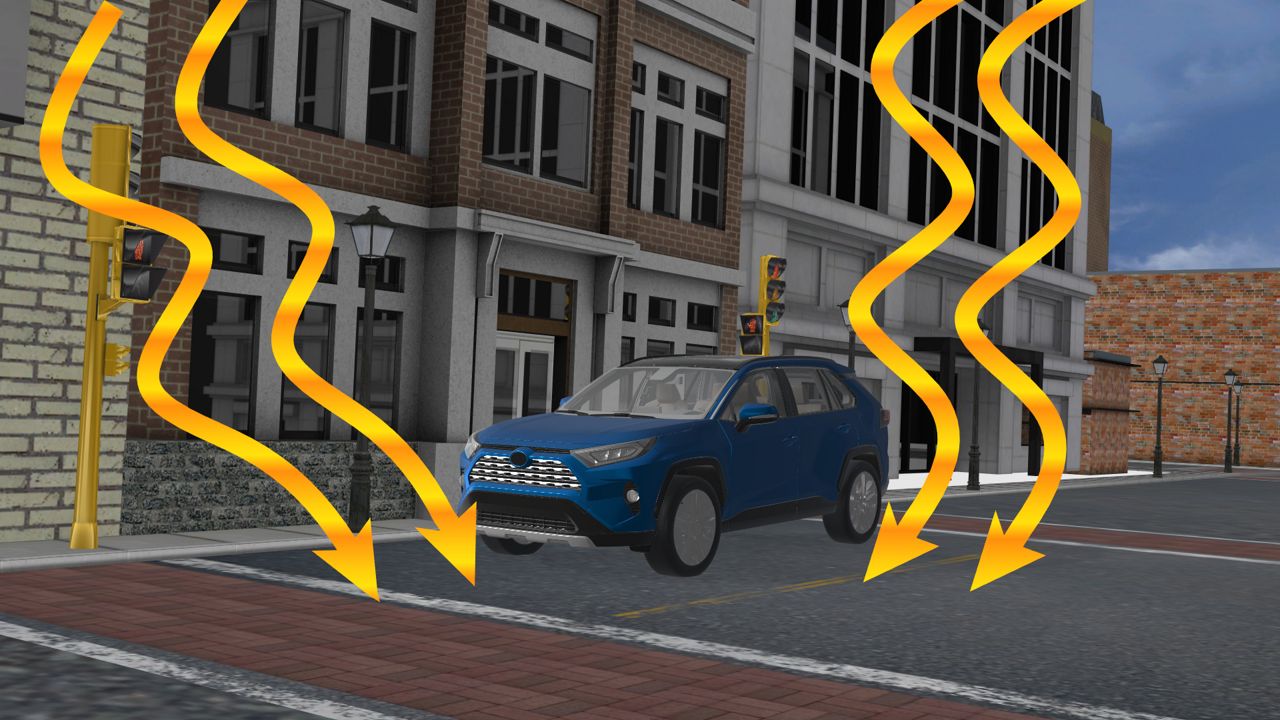Have you ever sat in your car on a sizzling summer day and snapped a picture of the temperature on your dashboard? It’s hard not to when you see it in the triple digits and the inside of your car feels like an oven.
The temperature your car is telling you is usually higher than the actual air temperature outside, especially on hot and sunny days. There are a few reasons for this.
Cars don’t have thermometers, but actually use thermistors. Instead of measuring the temperature using liquid mercury like a classic thermometer, a thermistor measures a change in electrical current because of heat added or taken away.
Thermistors are cheaper and easier to make than thermometers, and are small enough to conveniently place on your car.
The main issue with the thermistor isn’t the instrument itself, but where it’s placed in your car. Usually, it’s somewhere near your front bumper or behind the grille.
Being behind the grille, the thermistor becomes sensitive to heat being radiated back from the road.
Black asphalt has a low albedo, which means it absorbs a lot of the sun’s radiation and can trap that heat, allowing the surface to become much hotter than the air. That means your thermistor is not only measuring the air temperature, but the environment around it as well.
Think about walking barefoot from the grass to the street, and how much hotter the street is. The hot blacktop is influencing the temperature you see on the dashboard.
The actual air temperature that you see on your weather app or TV is measured much differently.
Ideally, thermometers are in shaded areas sheltered from wind, rain, snow or ice and are usually at airports where there is sufficient airflow and open space. They’re placed about six feet above ground level in a grassy area, so they’re not influenced by the ground, either.
Just that slight difference in location can cause your car to tell you it’s over 10 degrees hotter outside than it actually is.
When does the thermistor in your car perform the best? On cloudy days and at night when the sun isn’t a factor.
It also performs better after driving for a few minutes, especially on the highway at faster speeds since it isn’t basking in the warmth from below.
How about cold weather? If the temperature is above or below freezing by more than a few degrees, it can be a helpful tool that gives you an idea whether you’ll be driving on wet roads or black ice.

(Spectrum News/Sam Knef)
However, if it’s only within a degree or two, you should not use the thermistor as a reliable source to help make those decisions, since they aren’t precise under any circumstances.
So what is a thermistor good for if it’s not precise? At its best, it can help you decide whether you want to bring or ditch that extra jacket, especially if you’re traveling long distances or through microclimates where you can have major temperature swings in short distances.
And for most of us, a few degrees off the actual air temperature isn’t a big deal since what you see behind the steering wheel is usually a pretty good representation of what it’s going to feel like when you step out of the car, regardless of its shortcomings.
Our team of meteorologists dives deep into the science of weather and breaks down timely weather data and information. To view more weather and climate stories, check out our weather blogs section.

